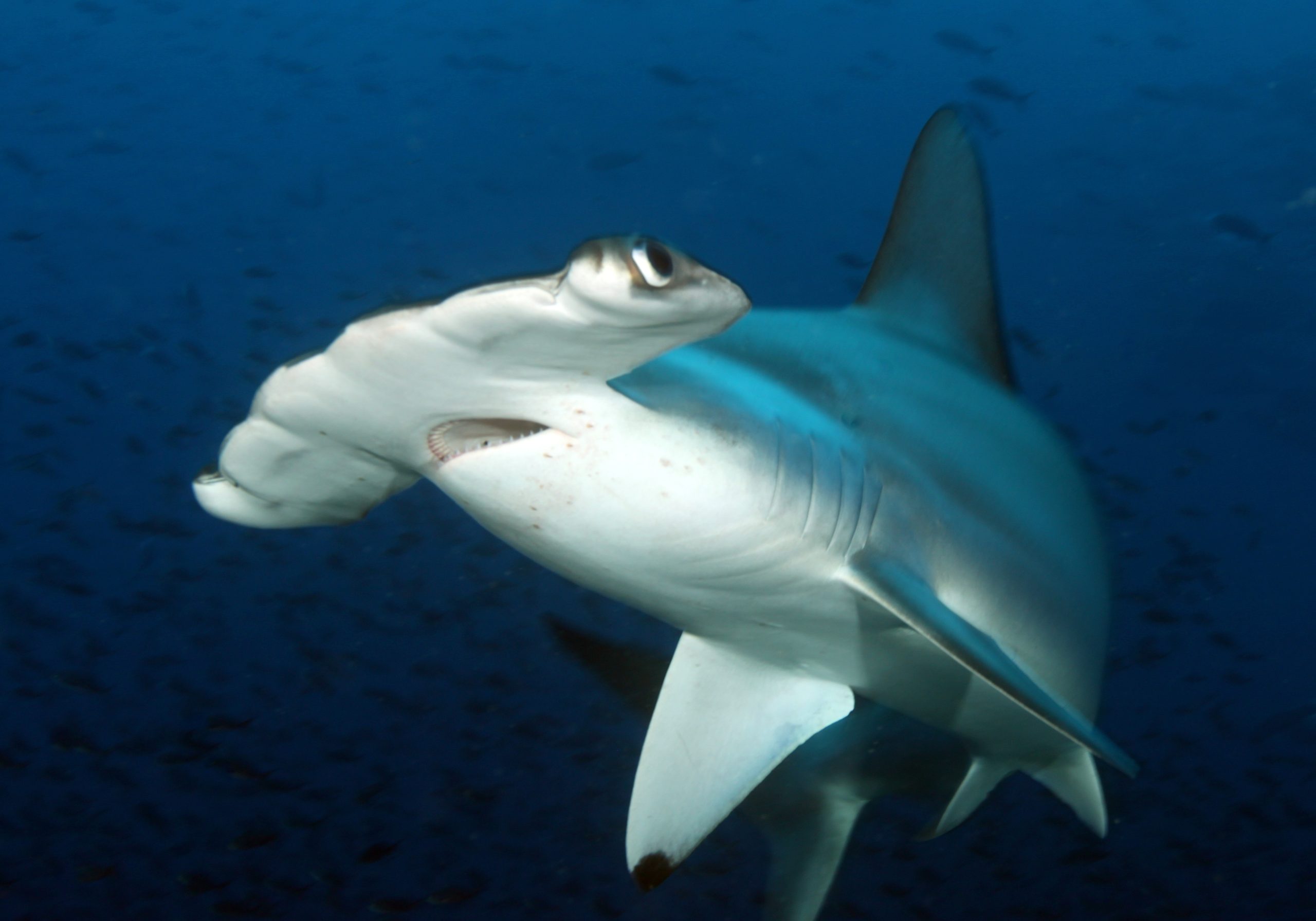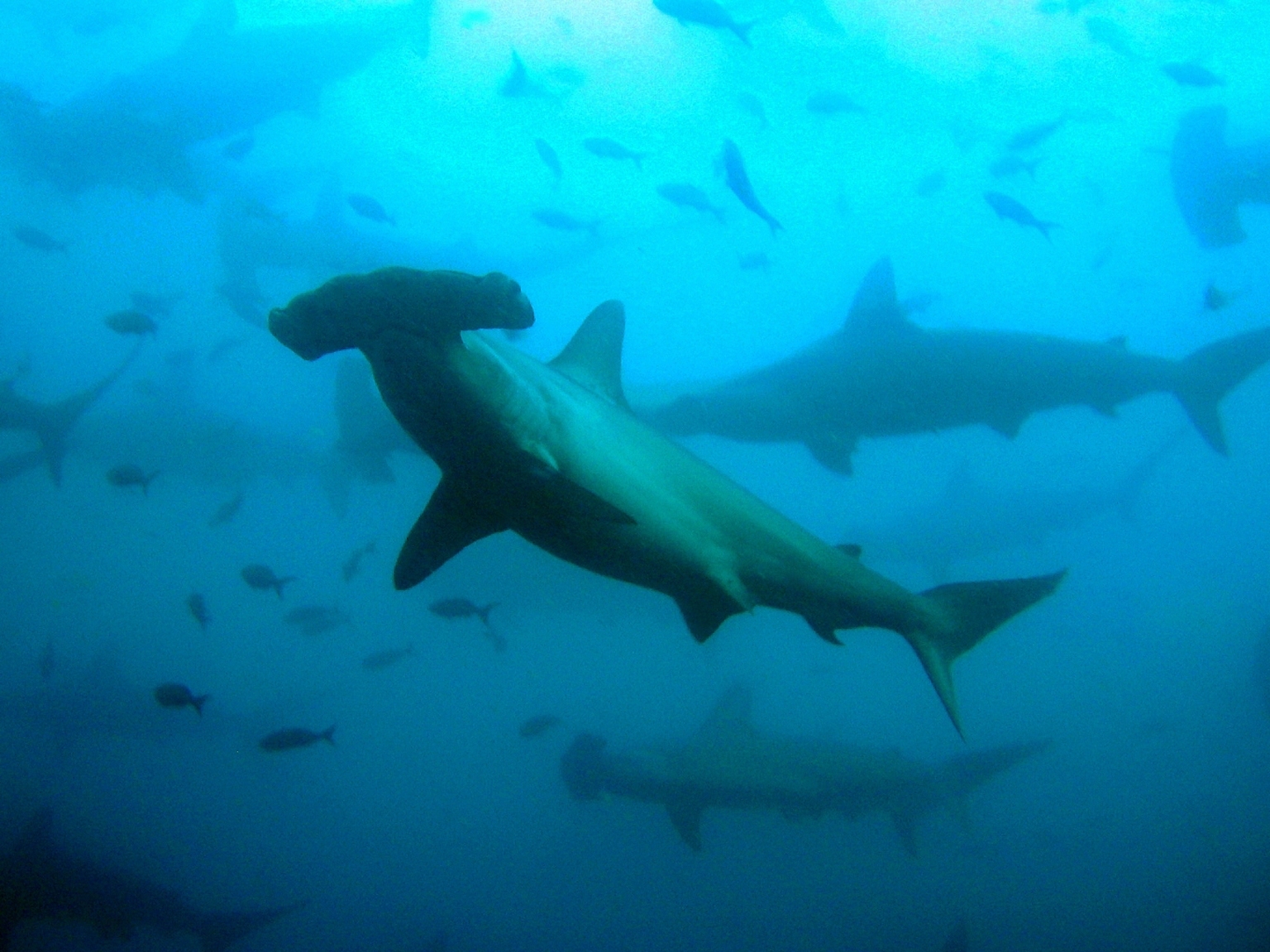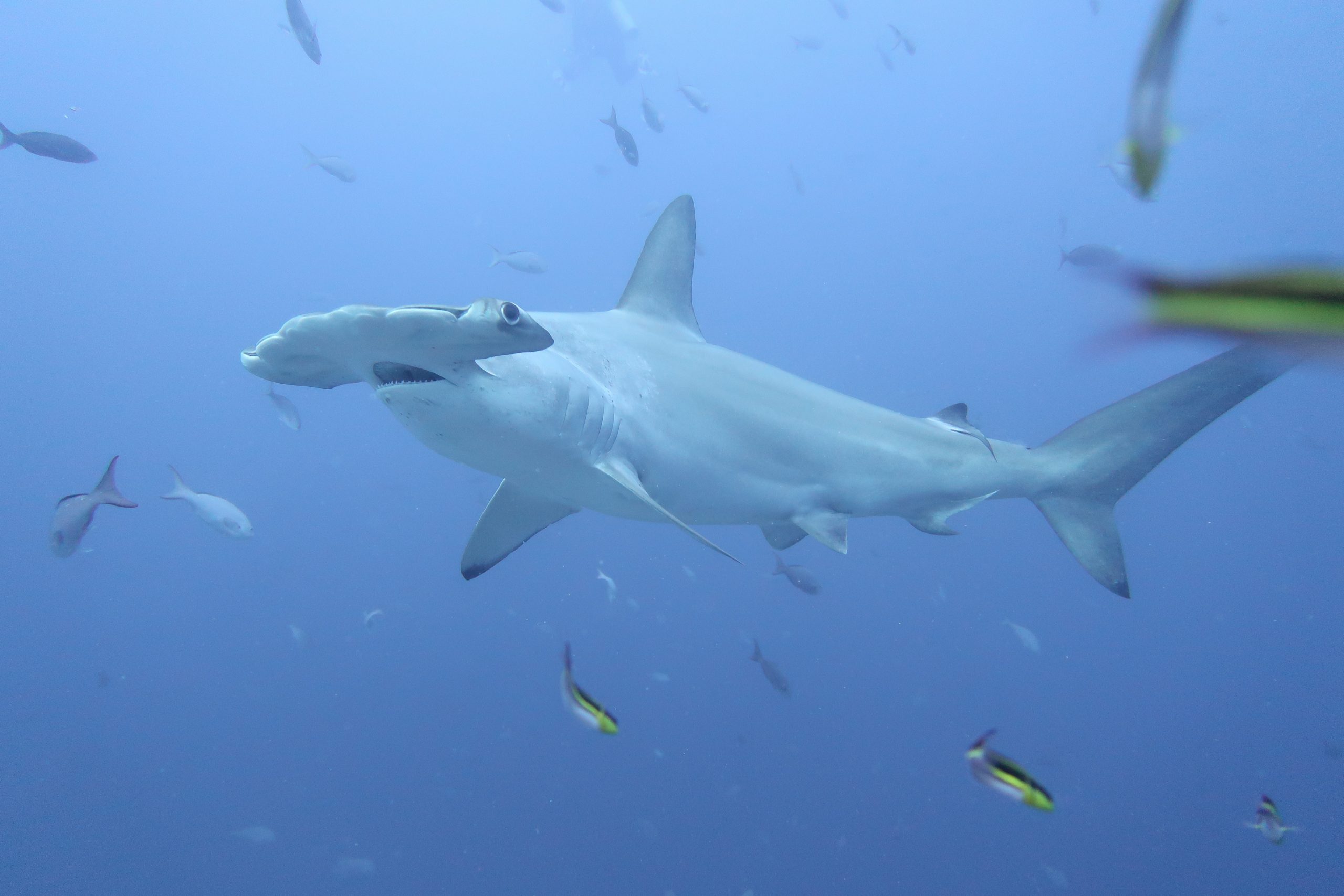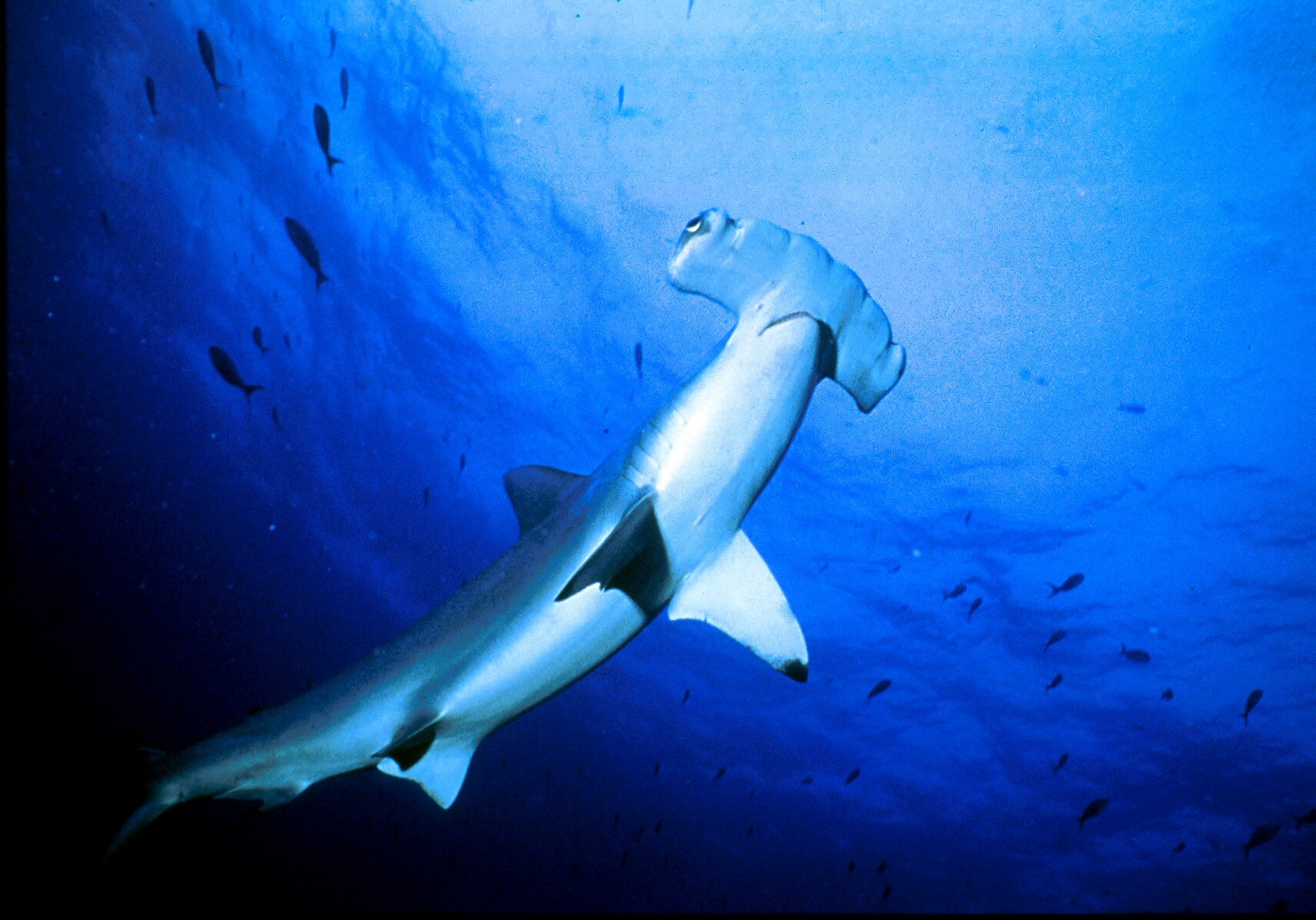Locating and Monitoring Breeding Zones of Scalloped Hammerhead Sharks
For millions of years, young Scalloped Hammerhead Shark pups have been raised in the mangrove swamps and reefs of coastal Galápagos. But no one had ever located an actual hammerhead nursery until 2017. That’s when the Galápagos National Park Directorate, led by biologist Eduardo Espinoza, found one along the northeastern coast of Santa Cruz Island. This major discovery of the hammerhead hideaway was a huge step in our understanding of the reproductive patterns and behavior of this highly migratory apex predator. Galápagos Conservancy has partnered with the Galápagos National Park Directorate – Quito on this important project to identify, study, and monitor breeding areas of this critically endangered species. The project will also include identification and monitoring of breeding areas of another predator in Galápagos, the vulnerable Blacktip Shark.
-
Project Location
Galápagos Marine Reserve
-
Partnership Launch
2022
-
Scalloped Hammerhead Population Decline
More than 80% in last 75 years
-
Partners
Galápagos National Park Directorate

Why It Matters
- Hammerheads are one of the most highly targeted species by commercial and illegal fisheries for their valuable fins. They are one of the few shark species to congregate in large schools, making them easy to target. They are also frequently caught as bycatch by pelagic and coastal longlines, gillnets, and trawls.
- In 2019, due to a rapidly decreasing global population and their low reproductive capacity, Scalloped Hammerhead Sharks were reclassified from endangered to critically endangered on the IUCN Red List. Scientists estimate that the global population has decline by at least 80% in the last three generations.
- Many efforts have been made to study adult Hammerhead Sharks, but very little is known about the first stage of life for newborns and juveniles. The best way to learn more is to learn about the locations, conditions, and threats to the habitats they use to birth and rear pups.
- With the Hermandad Marine Preserve now offering safe passage to hammerheads and other migratory marine wildlife traveling between Galápagos and Costa Rica, the time is now to accelerate this work.
Project Details

Background
The Galápagos Marine Reserve is one of only a handful of places on Earth where Hammerhead Sharks gather in huge schools – groups of up to several hundred Scalloped Hammerheads at a time can be seen near Darwin and Wolf Islands during certain times of the year. Galápagos is not just a short pit stop for these migratory apex predators. It’s a critical waypoint to gather with other animals. The 2017 identification of a Hammerhead nursery off Santa Cruz Island was a major discovery in our efforts to protect this critically endangered shark, and more information is needed to develop a long-term conservation plan.
Project Goals
By continuing to identify and map more Scalloped Hammerhead and Blacktip Shark nurseries in the nearshore waters of Galápagos, this project aims to lay the foundation for the implementation of better protections for the nursery sites that will help rebuild declining populations.


Expected Outcomes
This project will help scientists develop a more complete understanding of the life cycle of Scalloped Hammerhead Sharks, as well as of the importance of the Galápagos Islands to the species as a breeding and rearing headquarters.
Get Involved
Take Action for Galápagos, Right Now
Our generous community of supporters is the cornerstone of our efforts to preserve this ecological wonder of the world.



More from Galápagos Conservancy
Keep Exploring
Our Efficiency
78%
Direct conservation and grants investments
18%
Fundraising
6%
Management


